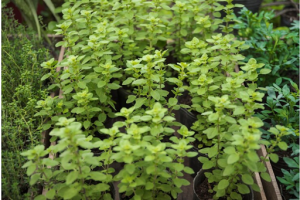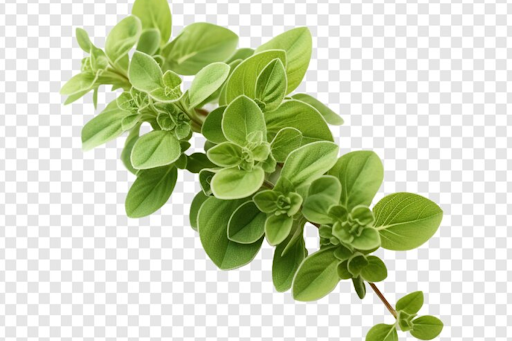Introduction
Marjoram fragrant herb is used often in cooking, creating a sweet and slightly citrus flavor to the dishes prepared. It finds its place within the family of oregano and is, therefore, more often used in Mediterranean recipes. This herb is beloved for its ability to impact soups, sauces, and meat dishes. However, should you run out of marjoram while in the kitchen? You may need oregano, thyme, or basil, according to the prepared dish.
Although these herbs share similar flavor profiles, oregano is a bit stronger so, use it sparingly. Whether you are trying out new recipes or learning about herbs, understanding how to substitute marjoram with another herb will make your cooking easier and tastier. This simple trick guarantees that you will never miss delicious flavors due to the unavailability of marjoram in the market!
What Does Marjoram Taste Like
Marjoram has a sweet, mild, and slightly floral taste that is both delicate and comforting. Its flavor carries subtle hints of citrus and pine, creating a warm and aromatic profile. Unlike oregano, its close relative, marjoram is less pungent and spicy, making it ideal for dishes that need a gentle, fragrant touch. This herb shines in Mediterranean cuisine, where it enhances soups, sauces, and vegetable dishes with its unique flavor.
Marjoram pairs beautifully with meats like chicken, lamb, and fish, adding depth without overwhelming the dish. If you’re exploring “what is marjoram — and what’s a good substitute,” understanding its taste helps in selecting the best alternatives. Thyme and basil can mimic its sweetness, while oregano offers a slightly bolder option. These substitutes allow you to preserve the delicate balance marjoram brings to your favorite recipes.
How to Store and Prep Marjoram
Storing and preparing marjoram the right way can help you enjoy its fresh, aromatic flavor for longer. To keep fresh marjoram, wrap the stems in a damp paper towel and place them in a plastic bag in the refrigerator. This keeps the herb moist and fresh for up to a week. You can also dry marjoram by hanging the sprigs upside down in a cool, dark place. Once dried, store the leaves in an airtight container away from sunlight to preserve their flavor.
When you’re ready to use marjoram, rinse the leaves gently under cold water to remove dirt. For cooking, you can use fresh leaves whole or chop them finely. If you only have dried marjoram, use about one-third of the amount called for in the recipe, as dried herbs are more concentrated. Proper storage and prep ensure marjoram stays flavorful, whether fresh or dried!
Sweet Marjoram Plants for Sale

Sweet marjoram plants are a wonderful addition to any herb garden, offering a sweet and delicate flavor that enhances many recipes. If you’re looking for sweet marjoram plants for sale, you’ll find them at garden centers, nurseries, or online herb suppliers. These plants are easy to grow and thrive in sunny spots with well-draining soil. They are perfect for beginners or experienced gardeners who love fresh herbs for cooking or natural remedies.
When buying sweet marjoram plants, look for healthy green leaves without any signs of yellowing or pests. Many online sellers also provide potted plants or seeds, so you can choose the option that suits your needs. Sweet marjoram is versatile in the kitchen, pairing beautifully with soups, roasted meats, and even fresh salads. Having a plant at home means you’ll always have fresh marjoram on hand, which tastes even better than the dried version.
If you’re wondering, “What is marjoram — and what’s a good substitute?” growing your own ensures you’ll rarely need a substitute. However, if you run out, herbs like oregano or thyme can step in. Sweet marjoram is not just a plant; it’s a flavorful, aromatic treasure for your garden and kitchen.
Maintenance and Growing Tips
Growing marjoram at home is easy and rewarding if you follow a few simple tips. This herb thrives in warm, sunny spots with well-drained soil. If planting outdoors, choose a location that gets at least six hours of sunlight daily. For indoor growing, place the pot near a sunny window. Marjoram is drought-tolerant, so it doesn’t need frequent watering. Water the plant when the top inch of soil feels dry, but avoid overwatering to prevent root rot.
To help marjoram grow strong, use a balanced fertilizer once a month during its active growing season. Regular pruning is also essential. Trim back the stems to encourage bushier growth and prevent the plant from becoming too woody. Removing flowers as they appear keeps the flavor of the leaves at its peak.
Sweet marjoram is sensitive to cold, so if you live in a cooler climate, consider growing it in a container you can bring indoors during frosty months. Keep the soil loose and aerated to promote healthy root development. With proper maintenance, your marjoram plant will provide fresh, flavorful leaves all year round. Whether you’re exploring “what is marjoram — and what’s a good substitute,” growing your own ensures a steady supply of this fragrant herb!
Conclusion
sweet, mild, and slightly floral taste, it elevates the flavor of soups, meats, and vegetable dishes. Knowing the answer to “what is marjoram — and what’s a good substitute” makes it easier to experiment with this herb in your cooking. Whether you’re using fresh marjoram or dried, its unique taste enhances many recipes, making it a must-have ingredient.
If you don’t have marjoram on hand, substitutes like oregano, thyme, or basil can help maintain a similar flavor profile. These alternatives work well in a pinch, but nothing beats the authentic taste of fresh marjoram. Growing your own sweet marjoram at home ensures you’ll always have a supply of this aromatic herb ready to use. By learning how to store and prepare marjoram properly, you can keep its flavor fresh and vibrant for your dishes.
Read More: Benefits of Field Pea Cover Crops

